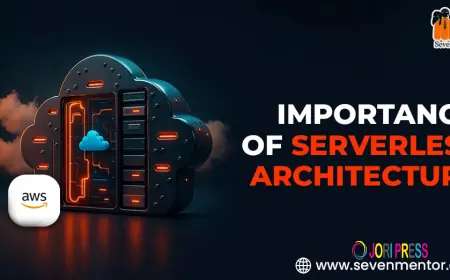How Web 2.0 Transforms Online Interaction and User Experience
These platforms allow users to create, share, and promote content easily for better SEO and online visibility. Businesses leverage Web 2.0 Services to build backlinks, improve rankings, and connect with audiences through interactive, user-generated content.
The internet has transformed drastically since its inception. From simple static websites to interactive platforms, the evolution has been monumental. One of the most significant shifts in this digital journey is the era known as Web 2.0. This period marked a transition from passive content consumption to active user participation, enabling communities to flourish online. The era has profoundly influenced how businesses, individuals, and governments interact on the digital plane.
Beginnings of the Interactive Web
In the late 1990s and early 2000s, internet users experienced a rigid structure of websites. These platforms offered limited interaction, primarily functioning as repositories of information. Users could read content but had minimal avenues for engagement or feedback. The shift to a more dynamic internet began when developers recognized the potential of collaborative platforms and user-generated content. This movement emphasized community-driven experiences.
Interactive Platforms and Collaboration
The hallmark of this era is interactivity. Unlike static pages, these platforms encourage users to engage through comments, likes, and shares. Collaboration became central to content creation, enabling communities to contribute collectively. Wikis, social media networks, and discussion forums epitomized this change, giving rise to a participatory culture that was unprecedented in the earlier web era.
Key Features of the Interactive Web
This era is characterized by several defining features that distinguish it from its predecessor. Central to these features is user-generated content, which empowers individuals to contribute their perspectives freely. Rich media experiences, such as videos, podcasts, and interactive infographics, further enhance engagement. Other characteristics include social networking capabilities, tagging systems, and customizable user interfaces, which personalize the browsing experience.
Social Networking and Connectivity
Social networks transformed the way people connect online. Platforms like Facebook, LinkedIn, and Twitter became hubs for interaction, allowing users to share ideas, media, and professional updates. The rise of social media not only facilitated personal communication but also reshaped marketing strategies and business operations. Brands began to leverage these platforms for outreach, creating a direct link between consumers and services.
Why the Modern Web Matters
This era brought numerous advantages to users and businesses alike. Enhanced interactivity allows users to engage deeply with content, fostering a sense of community and belonging. Businesses benefit from direct consumer feedback, enabling rapid innovation and responsiveness. Additionally, collaborative platforms and Free Web 2.0 Services have democratized information sharing, making knowledge more accessible and inclusive across geographies.
Content Creation and Democratization
One of the most notable benefits of this era is democratized content creation. Previously, publishing content required technical expertise or substantial investment. Now, anyone with an internet connection can share their ideas, opinions, or creative works. Blogs, video channels, and podcasts empower individuals to reach global audiences without relying on traditional media outlets.
Issues in the Modern Web Era
Despite its advantages, this era introduced several challenges. Privacy concerns emerged as users shared personal information online. The proliferation of fake news and misinformation undermined the credibility of some platforms. Furthermore, online communities sometimes became echo chambers, where users were exposed primarily to ideas that aligned with their existing beliefs, limiting diverse perspectives.
Security and Privacy Issues
User data is the lifeblood of many platforms, making security paramount. Breaches can compromise sensitive information, leading to identity theft and financial loss. Privacy concerns also extend to data tracking and advertising practices, where platforms monitor user behavior to deliver targeted content. Addressing these issues requires robust cybersecurity measures and informed digital literacy among users.
How Participatory Platforms Transform Marketing
Businesses quickly adapted to the participatory nature of the internet. Social media marketing, influencer campaigns, and content-driven strategies became central to digital outreach. This era emphasized customer engagement and brand transparency, with companies leveraging user feedback to refine products and services. The interactive nature of online platforms created opportunities for businesses to cultivate loyal communities and enhance brand visibility.
Customer Engagement Strategies
Direct communication channels enable businesses to interact with customers in real time. Companies monitor social media conversations, respond to inquiries, and incorporate feedback into product development. Additionally, many businesses use Web 2.0 Backlinks Services to improve online visibility and strengthen their digital presence. This shift allows brands to create personalized experiences, strengthening trust and long-term relationships with their audience.
The Role of Modern Web Tools in Education
This era revolutionized education by enabling collaborative learning environments. Platforms like online forums, educational blogs, and collaborative documents provide students with interactive experiences. Teachers can create engaging multimedia content, while learners actively participate, share insights, and collaborate on projects across the globe.
E-Learning Platforms and Tools
Digital classrooms have expanded beyond traditional learning spaces. Platforms like Google Classroom, Khan Academy, and Coursera allow students to access courses from anywhere, interact with peers, and submit assignments online. Companies like IT Leadz support these platforms by providing innovative solutions and tools that enhance digital learning experiences. These tools foster self-paced learning, peer collaboration, and a dynamic educational experience.
How Social Platforms Influence Society
Social media has become the most visible aspect of the modern internet, influencing culture, politics, and communication. Platforms allow users to create viral content, mobilize social movements, and shape public opinion. Influencers and content creators leverage these networks to engage audiences, demonstrating the power of participatory media in shaping trends and narratives.
Popular Social Media Platforms:
-
Facebook, Twitter, Instagram, TikTok, and LinkedIn
-
YouTube, Pinterest, Reddit, and Snapchat
Viral Content Dynamics
Content can spread rapidly through sharing, likes, and algorithmic promotion. Memes, challenges, and user-generated campaigns often achieve global reach in hours. This phenomenon illustrates the interconnectedness of modern digital communities and the profound impact of participatory online platforms.
Digital Innovations in E-Commerce
The e-commerce industry thrived with the rise of interactive online platforms. Customer reviews, rating systems, and social proof became integral to purchasing decisions. Platforms integrated interactive features, such as live chat, product videos, and personalized recommendations. Many businesses also use Link Building Services to enhance their website authority and drive more targeted traffic. This interactive ecosystem enhanced user trust and encouraged informed decision-making.
User Reviews and Recommendations
Consumers rely heavily on peer feedback before making purchases. Review systems and star ratings offer transparency, helping buyers evaluate product quality. Social engagement allows businesses to respond to feedback promptly, further enhancing credibility and customer satisfaction.
How Technology Shaped the Modern Web
Several technological developments enabled this era. Broadband connectivity, cloud computing, and advanced web frameworks allowed platforms to handle dynamic content efficiently. APIs and open-source software facilitated interoperability, enabling developers to create integrated solutions and innovative applications.
Cloud Computing Integration
Cloud services provide scalable storage and processing power, supporting interactive applications. Platforms like Google Drive, Dropbox, and AWS host vast amounts of user-generated content, ensuring accessibility and reliability. This infrastructure is critical for sustaining the collaborative and dynamic features characteristic of modern interactive platforms.
Emerging Trends in the Modern Web
While this era revolutionized the internet, emerging technologies are shaping the next phase. Concepts like Web 3.0, decentralized networks, and AI-driven platforms aim to enhance security, personalization, and automation. These innovations promise greater user control, transparency, and a more immersive digital experience.
Emerging Trends:
-
Decentralized social networks
-
AI content curation
-
Enhanced virtual and augmented reality platforms
Preparing for the Next Digital Shift
Businesses, educators, and individuals must stay informed about evolving technologies. Adaptation requires understanding new tools, privacy regulations, and interactive possibilities. Utilizing Web 2.0 Submission Sites can help users share content, gain visibility, and stay engaged. Preparing for future web generations ensures users remain active participants in an increasingly interconnected world.
Conclusion
This era redefined the internet by prioritizing interactivity, collaboration, and user participation. It transformed social networks, business models, education, and communication globally. While challenges like privacy concerns and misinformation persist, the participatory nature of this period paved the way for dynamic, community-driven experiences. Understanding its principles provides valuable insight into the evolution of digital technologies and the future trajectory of the online world.
Frequently Asked Questions (FAQs)
How Do Collaborative Tools Enhance Learning?
Collaborative tools like shared documents, discussion forums, and project platforms allow students and professionals to work together, exchange ideas, and learn collectively.
What Role Do Algorithms Play in Content Sharing?
Algorithms help prioritize and recommend content based on user behavior, ensuring relevant information reaches interested audiences efficiently.
Why Is Data Security Important Online?
Protecting personal information is crucial to prevent identity theft, financial loss, and breaches of privacy, ensuring users can safely engage with digital platforms.
How Do Online Platforms Foster Creativity?
Platforms encourage users to create blogs, videos, podcasts, and multimedia projects, providing tools and communities that inspire innovation.
What's Your Reaction?
 Like
0
Like
0
 Dislike
0
Dislike
0
 Love
0
Love
0
 Funny
0
Funny
0
 Angry
0
Angry
0
 Sad
0
Sad
0
 Wow
0
Wow
0


















































